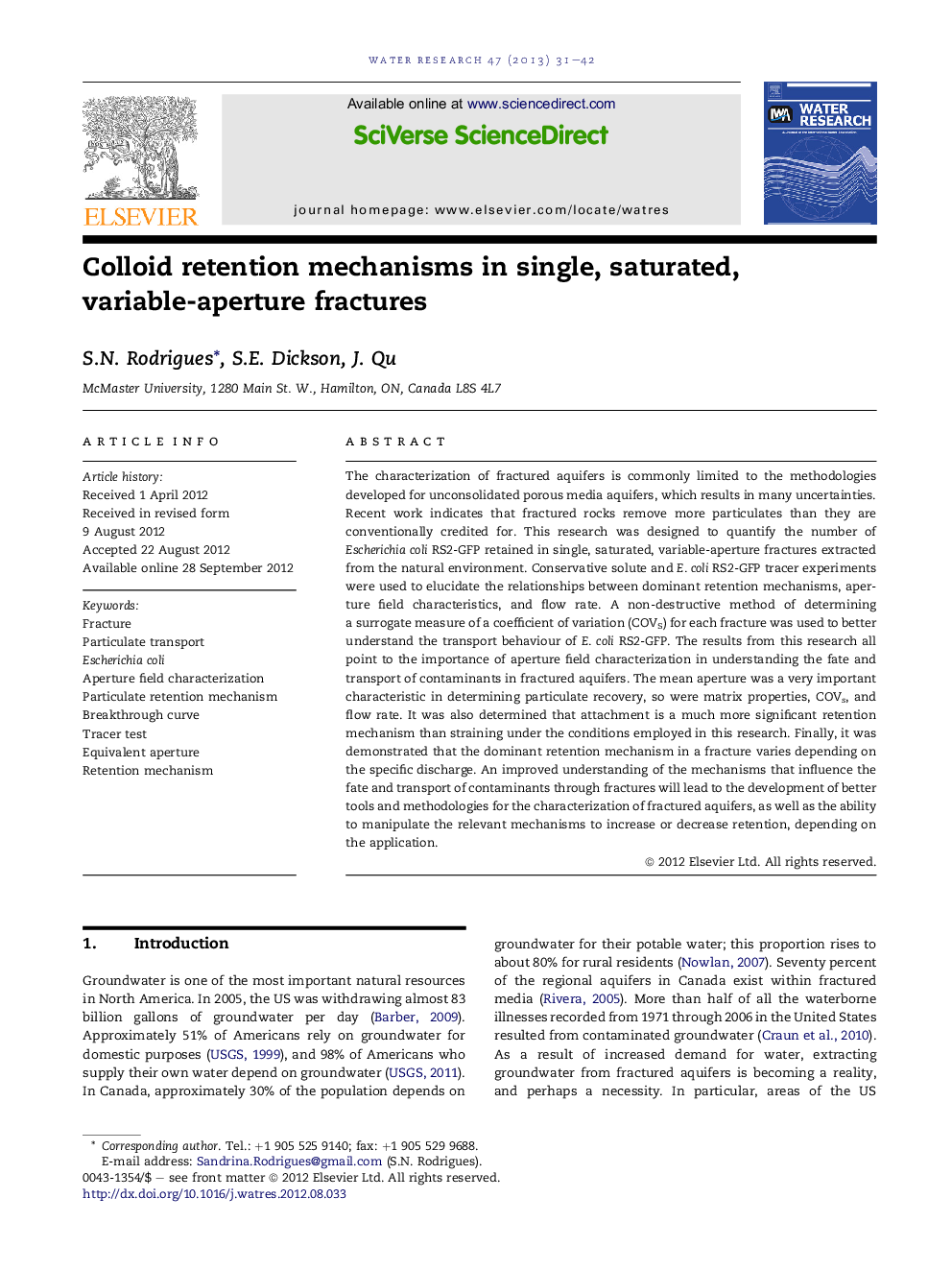| Article ID | Journal | Published Year | Pages | File Type |
|---|---|---|---|---|
| 4482512 | Water Research | 2013 | 12 Pages |
The characterization of fractured aquifers is commonly limited to the methodologies developed for unconsolidated porous media aquifers, which results in many uncertainties. Recent work indicates that fractured rocks remove more particulates than they are conventionally credited for. This research was designed to quantify the number of Escherichia coli RS2-GFP retained in single, saturated, variable-aperture fractures extracted from the natural environment. Conservative solute and E. coli RS2-GFP tracer experiments were used to elucidate the relationships between dominant retention mechanisms, aperture field characteristics, and flow rate. A non-destructive method of determining a surrogate measure of a coefficient of variation (COVS) for each fracture was used to better understand the transport behaviour of E. coli RS2-GFP. The results from this research all point to the importance of aperture field characterization in understanding the fate and transport of contaminants in fractured aquifers. The mean aperture was a very important characteristic in determining particulate recovery, so were matrix properties, COVs, and flow rate. It was also determined that attachment is a much more significant retention mechanism than straining under the conditions employed in this research. Finally, it was demonstrated that the dominant retention mechanism in a fracture varies depending on the specific discharge. An improved understanding of the mechanisms that influence the fate and transport of contaminants through fractures will lead to the development of better tools and methodologies for the characterization of fractured aquifers, as well as the ability to manipulate the relevant mechanisms to increase or decrease retention, depending on the application.
Graphical abstractFigure optionsDownload full-size imageDownload high-quality image (207 K)Download as PowerPoint slideHighlights► Attachment is a dominant retention mechanism for Escherichia coli in these experiments. ► The aperture field characteristics have a larger effect on E. coli retention than flow rate. ► In a fracture, the retention mechanism changes with the flow rate and aperture field.
